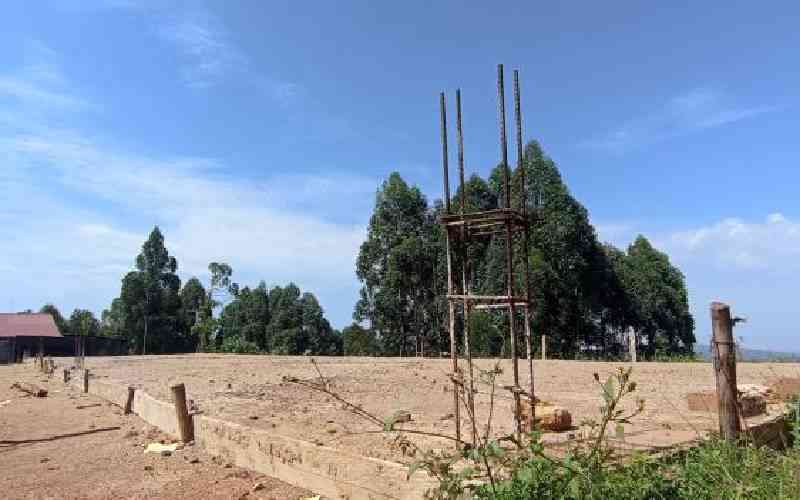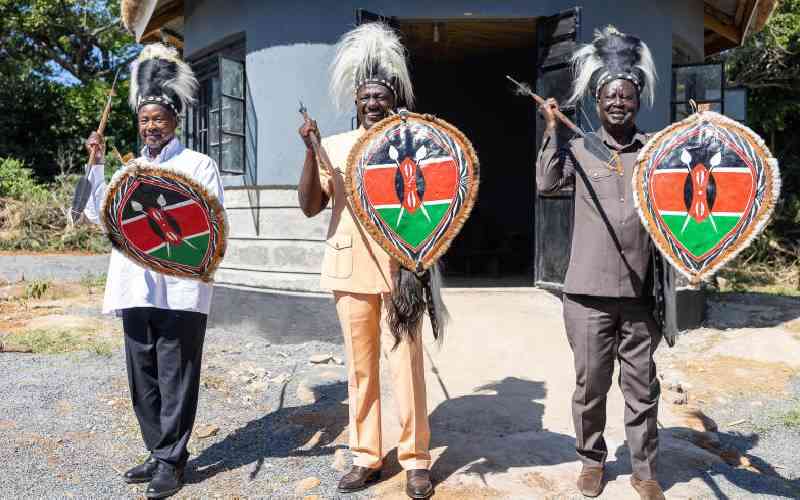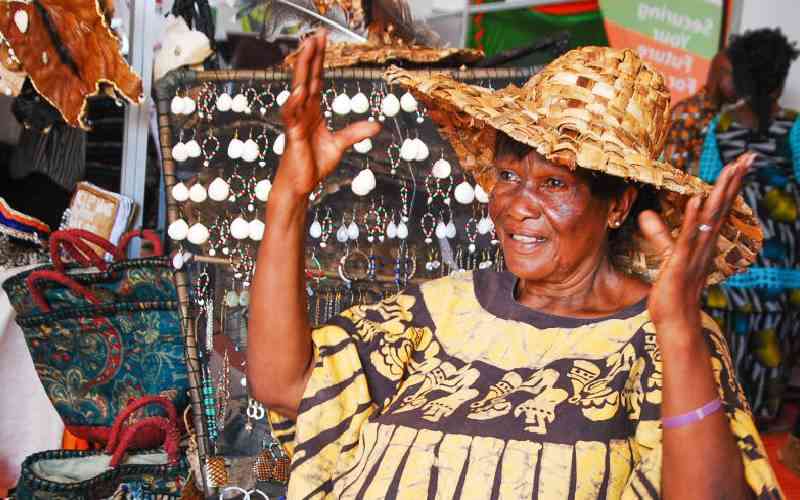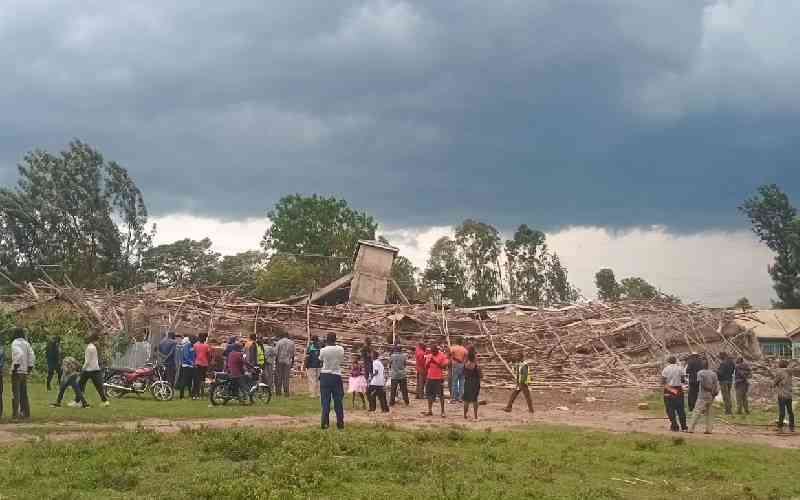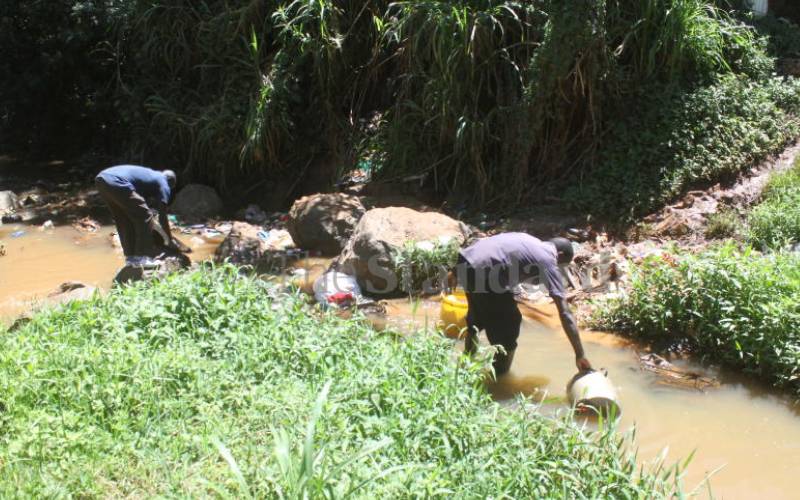
Men fetching water from Nyakomisaro river, Kisii County at Daraja Moja, 2017. [Sammy Omingo, Standard]
The once-flowing rivers in Kisii and Nyamira counties are slowly dying. It is a situation that has now left Eveline Moige of Bouti village in Kitutu Central worried as she recalls the gradual decline of the volume of water in the rivers in the last 20 years.
Today, the only spring in her village, which served about 1,500 people, has dried up, forcing her family to entirely depend on metered water, which sometimes they go without for weeks.
This has now left her with no alternative but to buy water from vendors at Sh20 per 20-litre jerrycan, which she says is too costly for her family.
She says springs that were relied on as sources of clean water started drying up in 2005.
“Most of the water sources have flowing water during the rainy season. They always run dry during drought,” says Ms Moige.
Esise and Keginga rivers, all in Borabu sub-county within Nyamira County, barely have flowing water, a month after the rain season. The same applies to several others rivers that are tributaries of River Kuja.
Nyamira Governor Amos Nyaribo said his administration will to conduct a survey on all water sources in the county and map out those that need urgent protection.
“We have not lost track yet. The reducing agricultural land sizes in our region has forced most people to encroach on riparian land. The laws are clear, we will be working closely with other government agencies to have all those interfering with our water sources prosecuted,” he told The Standard.
He said his administration will be issuing indigenous trees to locals living along main rivers and other waters sources to start planting in a bid to save the dying rivers.
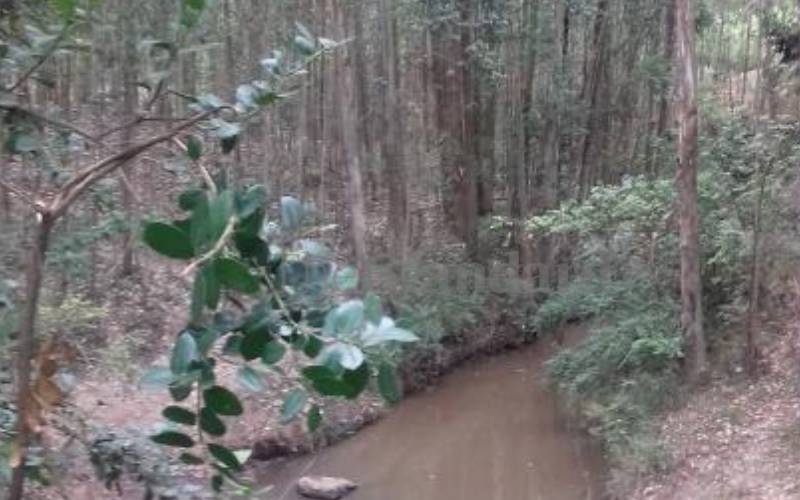
Some of the trees planted along Esise river, Borabu, Nyamira. [Eric Abuga, Standard]
Samson Bokea, a former director with National Environment Management Authority (NEMA), says underground water is slowly getting depleted.
“There is massive destruction of river banks and riparian zones. The environment has been destroyed. People have eaten into the wetlands. The reality has hit back and there is a serious crisis,” he says.
The regulation by Water Resources Management Authority (Warma) not to plant exotic trees near river banks has largely been ignored in the region.
Orders issued by both Nyamira and Kisii County governments to cut down blue gums (eucalyptus) near river banks and other riparian areas have largely been ignored.
Kisii Governor James Ongwae said his administration had made a deliberate move to cut down all eucalyptus trees grown along riparian land. “We need to have consolidated effort to ensure we protect our water sources. For a long time, we had allowed things to happen in an awkward manner. We must correct the mistakes. Gusii region has for years enjoyed good environment. We will not accept few individuals to take us away from our focus,” he said.
Ongwae said his administration has set aside more than Sh10 million to protect water sources. “So far, we have protected more than 60 springs across the county,” he said.
In Kisii County, the uncontrolled construction along River Nyakomosira in Kisii municipality has also continued to affect the quality of the water that the urban poor depend on.
Nyanchwa water spring in Kisii town has been serving locals for decades has dried up.
When Charles Nyamweya was growing up in the Nyanchwa in the early 80s, the spring was the only source of water for nearly 5,000 people who lived in the area at the time. The case is not different for Giokanyo spring near Kisii High School.
 The Standard Group Plc is a multi-media organization with investments in media platforms spanning newspaper print
operations, television, radio broadcasting, digital and online services. The Standard Group is recognized as a
leading multi-media house in Kenya with a key influence in matters of national and international interest.
The Standard Group Plc is a multi-media organization with investments in media platforms spanning newspaper print
operations, television, radio broadcasting, digital and online services. The Standard Group is recognized as a
leading multi-media house in Kenya with a key influence in matters of national and international interest.

